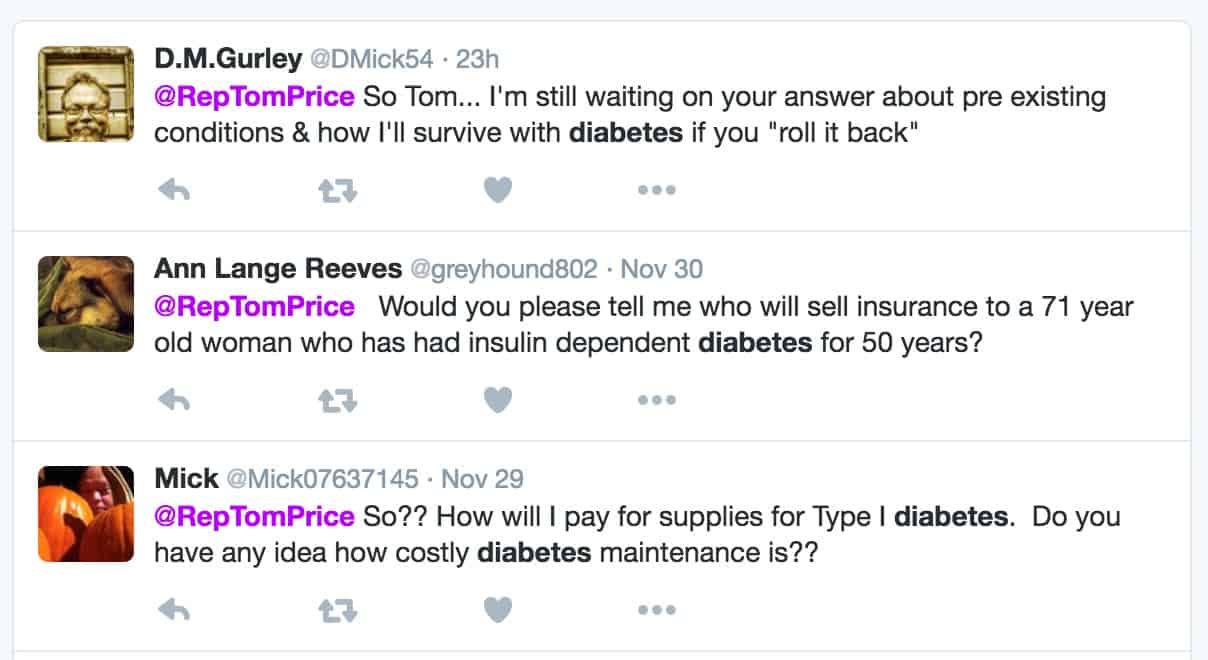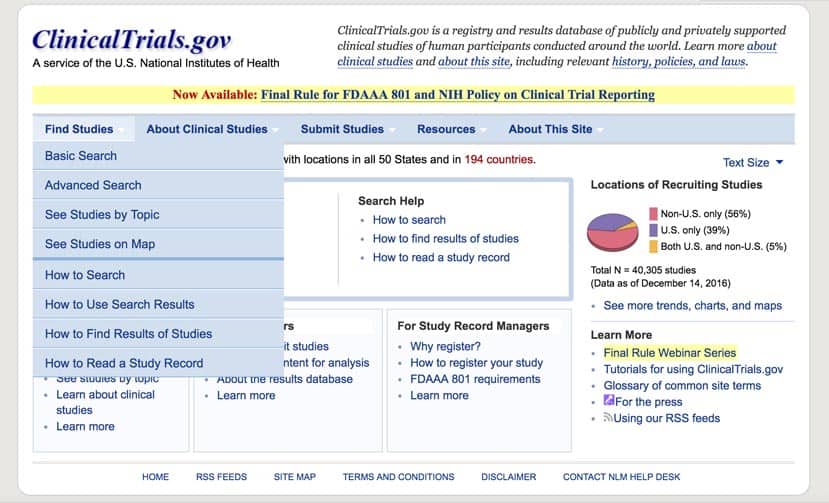1. Research
To date, there are 1,000 open studies that pop up when searching for “type 1 diabetes” on the National Institutes of Health site, www.clinicaltrials.org. Familiarize yourself with studies in various phases, and volunteer to participate if you can. The more information researchers can collect about type 1, the faster they can reach new developments and get better technology on the market.
In September, the Food and Drug Administration approved the first artificial pancreas system, made by Medtronic. Other major companies are working to get their own products to meet FDA standards. You can refresh yourself on the FDA’s position on closed-loop systems and artificial pancreas research on its website.
There are also over 1,000 search results for “type 2 diabetes,” which include studies that examine the connection between gestational diabetes mellitus and type 2, and at least one that looks at the positive effects of drinking blueberry tea on type 2.
Keep your eyes peeled for updated CGMs and insulin pumps on the market and on the Clinical Trials site for approval and research developments.
I advise reading the following article:
2. Healthcare Policy
If you’re worried, losing sleep, or just plain curious about how your diabetes might be affected when the administration changes hands in 2017, you’re not alone:

Rep. Tom Price, a Congressman from Georgia, is an orthopedic surgeon. In late November, President-elect Trump nominated Price to be the secretary of the Department of Health and Human Services.
Here are a few of Trump’s and Price’s main positions on the Affordable Care Act. Keep an eye on these and how they might influence the new administration’s pledge to repeal the ACA in the New Year:
Coverage
A positive effect of the passing of the ACA on people with diabetes, is, according to the American Diabetes Association: “job-based plans and new individual plans aren't allowed to deny coverage, charge more, or refuse to cover treatments due to a pre-existing condition, such as diabetes.” According to the Washington Post, marketplace plans implemented under the ACA cover about 11 million Americans.
In a recent interview with Time, President-elect Trump says he “likes” those aspects of the law related to covering people with preexisting conditions and people who are under the age of 26.
However, Time also reports that Tom Price’s policy aims to eliminate the mandate to cover people with preexisting conditions. In August, Price released a video, saying, “ We would allow all those individuals to pool together…into groups of hundreds of thousands or a million or more individuals, so they get the purchasing power of millions. What happens then is that it makes it so that no one individual’s adverse health status drives up the cost for anybody else.”
Cost
People with diabetes are currently eligible for both free preventative care treatments and “essential health benefits,” which must be covered under marketplace plans, according to the American Association of Diabetes Educators.
Regarding the cost of insurance plans, President-elect Trump’s 7-part healthcare reform plan includes, “Modify[ing] existing law that inhibits the sale of health insurance across state lines. As long as the plan purchased complies with state requirements, any vendor ought to be able to offer insurance in any state.”
Medicare
Tom Price supports the Republican agenda that promises to “protect Medicare for today’s seniors and preserve the program for future generations.”
This agenda, collectively called A Better Way, doesn’t appear to specifically address the “donut hole,” conundrum facing 3 million Medicare beneficiaries each year (which the ACA is phasing out by 2020), but does mention “updating payment models that are outdated and inefficient.”
Medicaid
Under the ACA, Medicaid eligibility has been expanded to cover people in a wider income bracket. “Block-grant Medicaid” has been proposed, which would change how each state’s Medicaid program is funded.
The president-elect’s healthcare reform page says, “The state governments know their people best and can manage the administration of Medicaid far better without federal overhead.”
Healthcare Mandate
The ACA requires individuals to purchase health insurance, which widens the pool of coverage. Those without health insurance face a tax penalty – if someone can’t afford health insurance, they may qualify for an exemption.
The president-elect’s healthcare reform page says, “Completely repeal Obamacare. Our elected representatives must eliminate the individual mandate. No person should be required to buy insurance unless he or she wants to.”
Further reading:
3. Global Support
While keeping an eye on global and national diabetes trends, you can make a difference, too! You don’t have to look far to find excellent opportunities to contribute to diabetes efforts and advocacy.
Don’t know where to start? Here are a few ideas:
Read up on groups with mission statements and concrete action that you agree with, and learn how you can donate unwanted supplies and make financial donations. There’s a plethora of diabetes nonprofits online, including the International Diabetes Federation’s Life for A Child program, Insulin for Life, and T1International.
Check out a recent interview with Elizabeth Rowley, founder of T1International, which held a campaign to raise funds for diabetes care in Syria earlier this year. T1International is a U.K.-based charity that aims to improve access to insulin and other type 1 diabetes needs around the world.
The crisis in Syria has severely affected everyone there, not just people with diabetes. Visit the Syrian American Medical Society Foundation’s site to find out how you can contribute to efforts to help those who are in greatest need.
TheDiabetesCouncil Article | Reviewed by Dr. Christine Traxler MD on June 04, 2020






